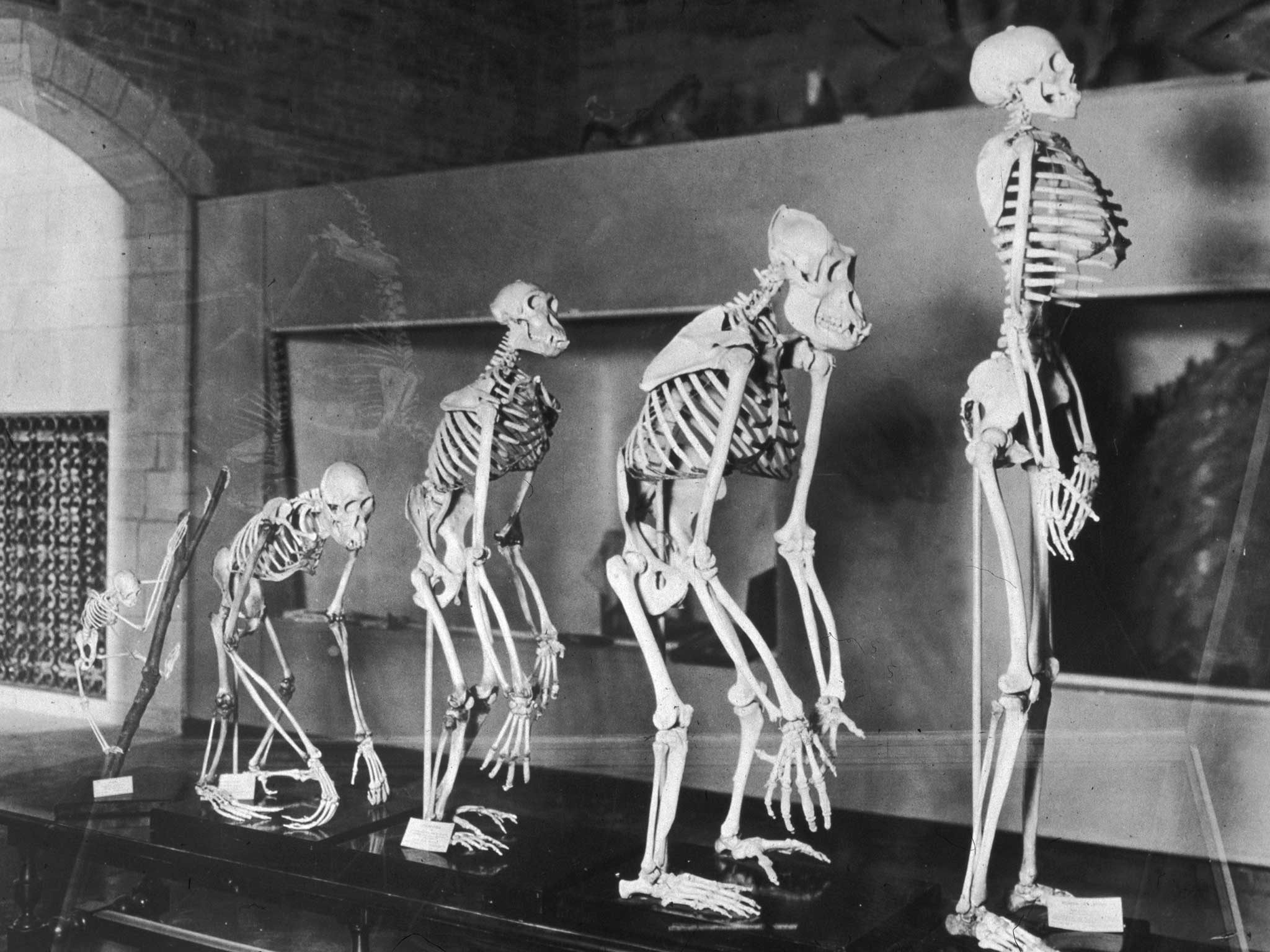Who is Lucy the Australopithecus, and how did she show the big problem with the 'Ascent of Man' picture?
The Google Doodle recalls the famous ‘March of Progress’ drawing — though the discovery of the skeleton that it commemorates actually led to a number of the criticisms of that picture

Lucy the Australopithecus afarensis is commemorated today in a Google Doodle that recalls a picture that she helped show had a big problem.
The picture shows Lucy standing in the middle of a drawing that recalls the March of Progress or Ascent of Man, a drawing that shows 25 million years of evolution by depicting examples lined up as if in a parade. And as well as being one of the most important findings in that process, Lucy changed our understanding of how that walk towards the humans that we are today happened.
When Lucy was discovered, in 1974, she threw out existing understanding of evolution — for those that believe in it, as well as those that don’t.
Lucy showed that our early ancestors started walking upright before they became clever. That discovery changed our understanding of humanity’s origins — many had presumed that those that went before us became smart first, using that extra understanding of the world to develop the rest.
The skeleton and others like it actually point to some of the problems with the March of Progress drawing. Many have criticised the picture for depicting evolution as if it is a single process that continues in a straight line towards the humans that we are today.
Lucy showed that wasn’t the case. Some experts, for example, claim that the find actually shows that Lucy and her contemporaries were actually better at standing up than today’s humans, because our anatomy is built so that we can give birth to babies with big brains and big heads.
In the 40 years since Lucy was found, many more fossils have been discovered. Together, they showed that unlike the drawing seems to imply our path towards modern humanity wasn’t one of gradual but linear progress — instead it involved a huge cast, each taking various different paths, with unclear relationships between each.
Lucy was the first fossil found that was more than 3 million years old. Because she stood up, it seemed to indicate that she would stand between apes and us on the line shown in the March of Progress — but later research showed that there was no single line, or path, and instead were many of them.
That criticism has been made by writers including Stephen Jay Gould.
“The march of progress is the canonical representation of evolution – the one picture immediately grasped and viscerally understood by all,” he wrote in his book Wonderful Life. “The straitjacket of linear advance goes beyond iconography to the definition of evolution: the word itself becomes a synonym for progress.
“[But] life is a copiously branching bush, continually pruned by the grim reaper of extinction, not a ladder of predictable progress.”
Join our commenting forum
Join thought-provoking conversations, follow other Independent readers and see their replies
Comments